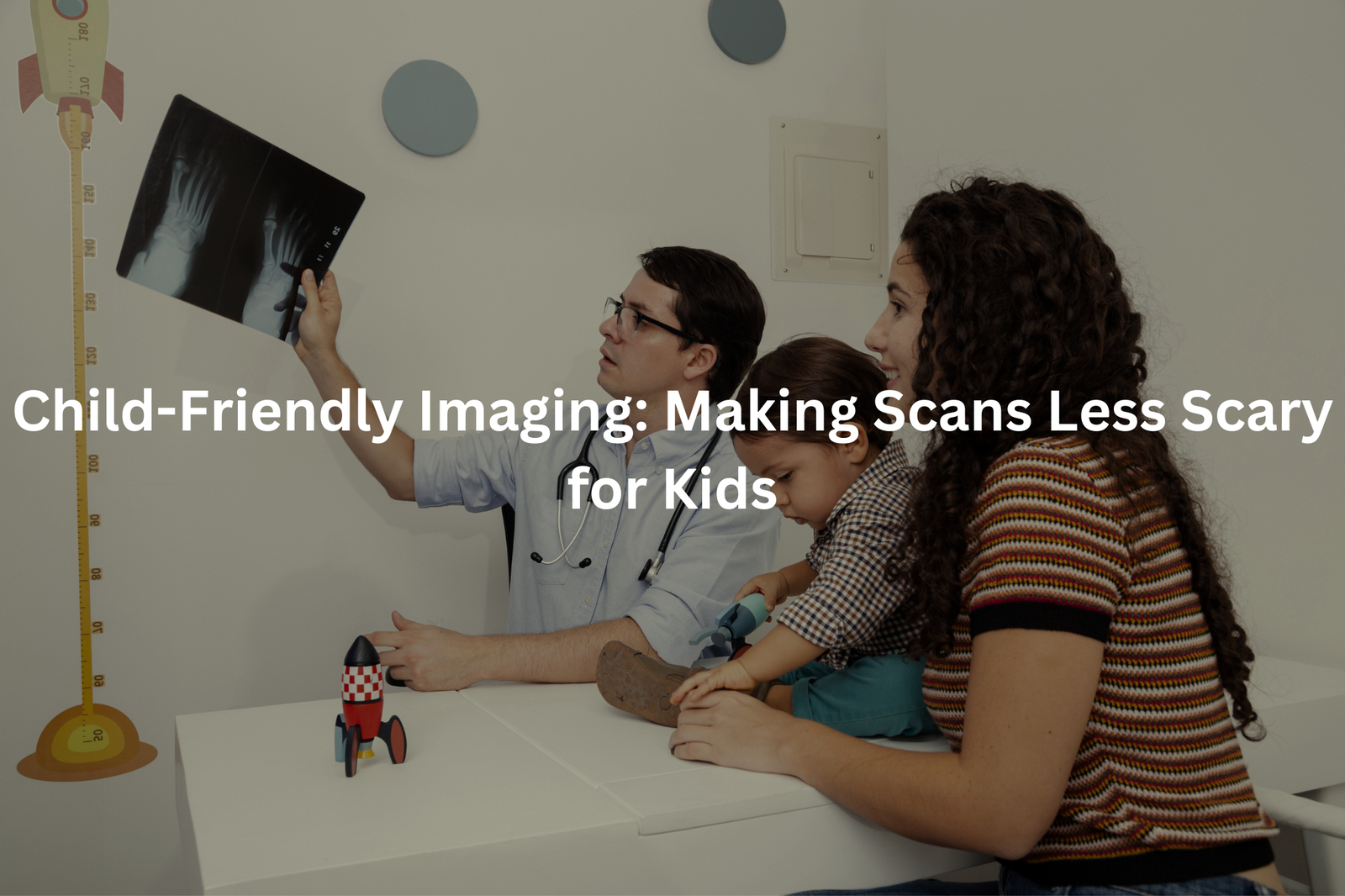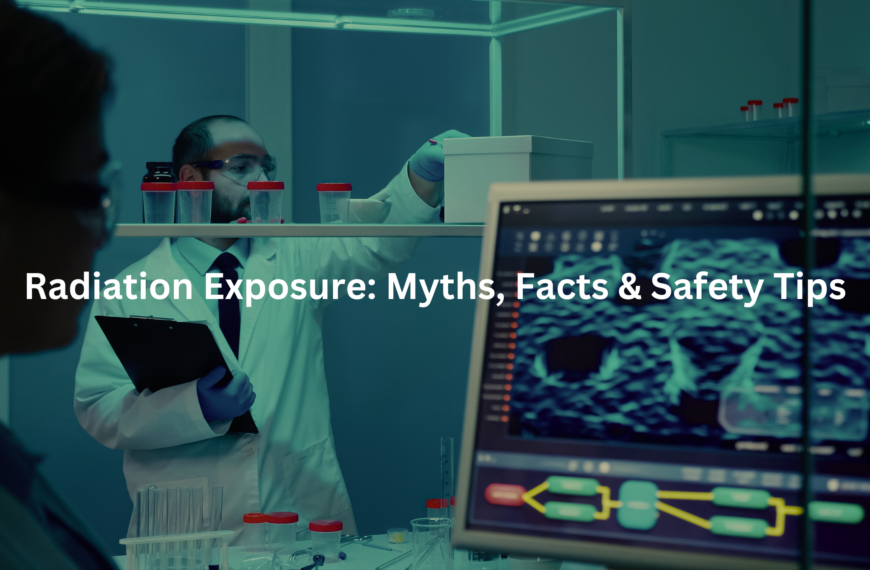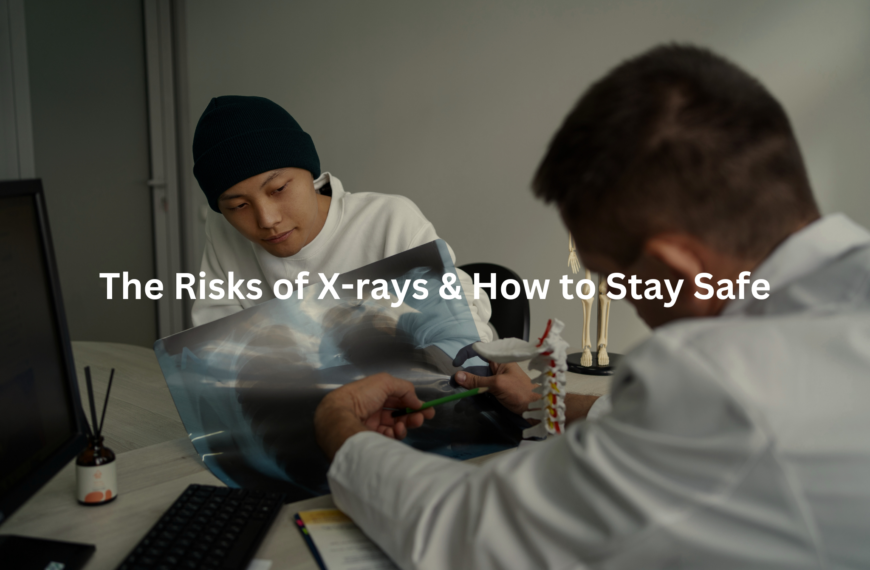Child-friendly imaging techniques help kids feel safe, calm, and comfortable during medical scans. Discover how hospitals make tests less scary!
Medical scans at hospitals often make kids anxious. Those big machines like MRI scanners, CT units, and X-ray equipment make strange noises that can be scary. To help out, Australian hospitals now use special techniques to chill kids out during scans. Bright wall decals change boring rooms into friendly places, and they have sound systems that play calming music through headphones.
Some places even have practice sessions where kids can look at the equipment before the real deal. These cool methods, along with easy-to-understand explanations from radiographers, make medical imaging a lot better for young patients. So if you wanna know more, keep reading!
Key Takeaway
- Specialised equipment is designed just for kids.
- Non-invasive techniques like ultrasound and MRI are safer.
- Distraction methods help kids feel more relaxed during tests.
Specialised Equipment for Kids
Perth Children’s Hospital imaging department really shines when it comes to making medical experiences more friendly for kids. Instead of feeling scared or anxious in a regular hospital, children find a place designed just for them. This department has special tools made for little patients, like MRI and CT scanners that fit their smaller bodies better.
Each year, the department handles about 56,000 scans. They do it safely, using lower radiation doses that are better for children’s delicate bodies. The walls are bright and colorful, with fun underwater murals that make the whole place feel less like a hospital and more like an adventure. Even the machines have cheerful decals, which help take away some of the worry kids might feel during their scans.
The team here is made up of specialists, including radiologists, technologists, and nurses, who are all trained specifically for caring for kids. They know how to gently handle both the young patients and their worried parents. This department also sticks to very careful rules about radiation safety, using something called the ALARA principle (which stands for As Low As Reasonably Achievable) for all their imaging work.
So if you ever find yourself at Perth Children’s Hospital, remember it’s a place where kids can feel comfortable, and their health comes first.
Parents can support their children through medical imaging by:
- Bringing comfort items
- Explaining procedures beforehand
- Maintaining a calm presence
- Following staff instructions
The facility’s design and protocols reflect current best practices in paediatric medical imaging.
Non-Invasive Imaging Techniques
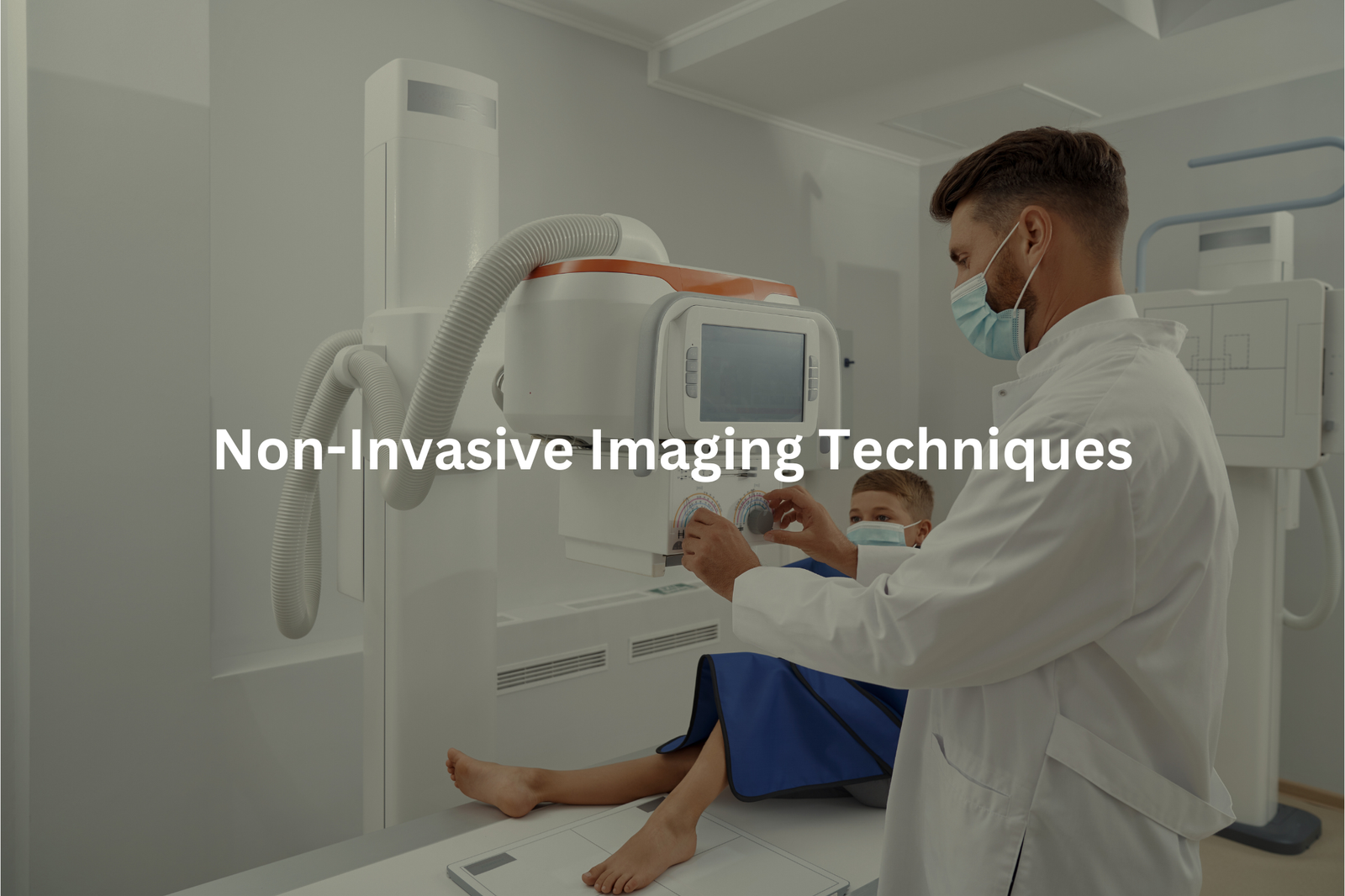
Hospitals use different types of medical imaging to look inside the body. Each machine serves a specific purpose, creating detailed pictures without surgery.
Ultrasound scanners work with sound waves (not radiation) to show moving pictures of organs and tissues. The process needs a special gel on the skin while a probe glides across the area. Quick, safe, and perfect for watching babies before they’re born.
MRI machines (which cost about $3 million each) create clear images using magnets and radio waves. The scanner makes loud tapping noises, reaching 110 decibels – as noisy as a rock concert. Many Australian hospitals now offer special headphones or video goggles to help patients stay calm during the 30-60 minute scan.
CT scanners combine X-rays with computers for fast, detailed pictures. They use radiation, so doctors choose them carefully, especially for young patients(1). A typical chest CT scan takes just 10-15 seconds but shows incredibly detailed cross-sections of bones and organs.
For children needing scans, practice sessions with mock machines help reduce anxiety.
Distraction and Comfort Techniques
Sources: The Royal Children’s Hospital Melbourne.
Inside the MRI scan rooms at the Royal Children’s Hospital, cartoons flicker across screens as young patients lie still in the large machines(2). This approach turns scary medical procedures into less daunting experiences.
Medical centres employ proven distraction techniques to ease anxiety during scans:
- Child Life Therapists use age-appropriate tools to explain procedures.
- Personal comfort items like stuffed toys and blankets create a familiar setting.
- Video systems show movies during 30-45 minute scanning sessions.
- Gentle pressure techniques can help calm infants.
These methods reduce the need for sedation, which comes with medical risks and can lengthen recovery time. Research indicates that children who are properly prepared and distracted often complete scans without needing medication.
Parents can help make procedures smoother by:
- Bringing familiar items from home
- Talking about the scan beforehand
- Practicing stillness exercises.
This blend of medical skill and thoughtful preparation changes intimidating medical equipment into just another part of treatment.
Minimising Radiation Exposure
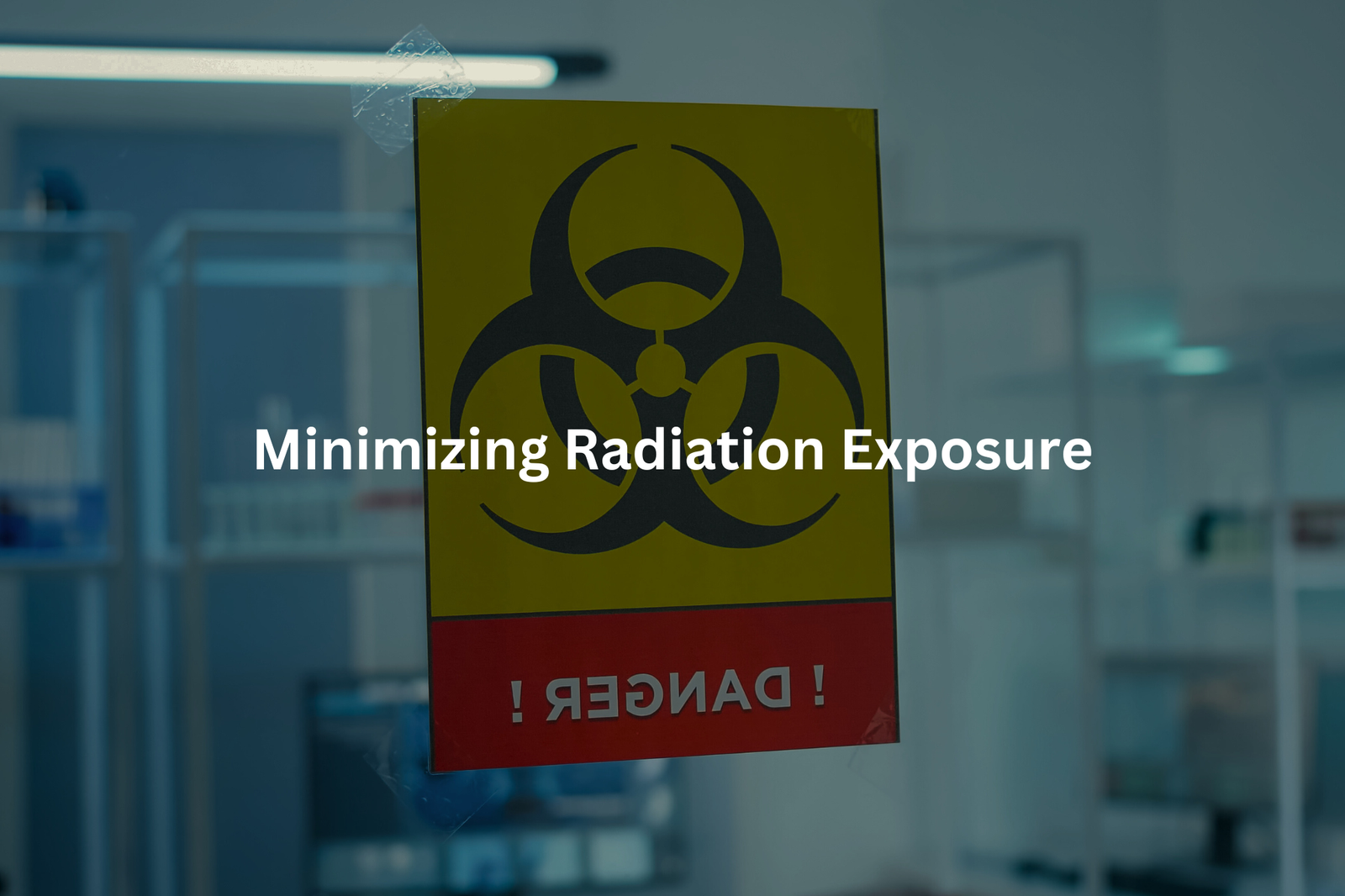
A CT scan’s radiation output reaches 70 times higher than a chest X-ray (based on standard medical measurements). The quick, sliding motion through that big white machine masks a complex process underneath.
Australian hospitals follow ARPANSA guidelines for radiation safety, ensuring doses remain low. Modern CT machines adjust radiation levels intelligently, providing just the right amount for clear images while avoiding unnecessary exposure(3).
Medical teams choose scan areas carefully, focusing only on necessary body parts. They might scan a chest but skip the abdomen if it’s not needed. Sometimes, they pick radiation-free options like ultrasounds or MRIs first.
Parents should know that while one CT scan carries minimal risk, multiple scans add up over time. Questions worth asking the doctor:
- What’s the medical need for this scan?
- Could an ultrasound or MRI work instead?
- How will this help with diagnosis?
Smart scanning means using the least radiation needed for accurate results.
FAQ
What are CT and MRI scans, and how do they differ?
CT (computed tomography) scans and MRI (magnetic resonance imaging) scans are both powerful tools used to create detailed images of the body. CT scans use X-rays to produce cross-sectional images, while MRI scans use strong magnetic fields and radio waves to create images, often focusing on soft tissues. Both can provide valuable information to healthcare teams, but the techniques differ in their approach.
How can CT scans be made more child-friendly?
When it comes to CT scans for children, there are a few key steps that can help make the process more comfortable and safe. Radiologists may use low-dose CT techniques to reduce the amount of radiation exposure. They also consider the child’s weight and size to tailor the dose. And they work closely with the care team to keep the child calm and still during the scan.
What are the benefits of MRI scans for children?
MRI scans are often preferred for children because they don’t use ionising radiation like X-rays or CT scans. This makes them a great option for imaging soft tissues, the brain, and other areas without exposing young patients to unnecessary radiation. MRI scans can provide detailed, real-time images that help doctors make accurate diagnoses and develop the best treatment plans.
How can MRI scans be made more accessible for children?
Making MRI scans more accessible for children involves a few key considerations. Radiologists may use weight-based contrast media and customise the MRI machine settings to accommodate smaller bodies. They also work to keep the child calm and still during the scan, which can involve using child-friendly distractions or even sedation in some cases. The entire care team collaborates to ensure a positive, high-quality imaging experience.
What steps can be taken to reduce radiation risk in paediatric imaging?
Reducing radiation risk in paediatric imaging is a top priority. Radiologists follow the “Image Gently” and “Image Wisely” campaigns, which provide guidelines on adjusting techniques to lower the radiation dose. This includes using low-dose CT scans, weight-based contrast media, and optimising scan parameters. Radiologists also work closely with the entire care team to ensure the imaging test is necessary and performed safely.
How do advanced MRI techniques benefit paediatric patients?
Advanced MRI techniques can provide valuable information to help diagnose and treat paediatric patients. Techniques like diffusion-weighted imaging, perfusion imaging, and spectroscopy can shed light on brain function, blood flow, and metabolic processes. These advanced MRI capabilities are particularly useful for evaluating conditions like brain tumours, seizures, and developmental disorders in young patients. The care team works diligently to ensure high-quality, child-friendly MRI imaging.
Conclusion
Medical imaging for children needs a gentle touch. Australian hospitals use kid-sized equipment and bright, colourful rooms to make tests like X-rays, MRI scans, and ultrasounds less scary. Staff bring special toys and screens during procedures, helping young patients to stay still and calm.
Medical teams work to minimise radiation exposure through careful dose control and protective shields. These methods let doctors get clear images while keeping children calm and safe during their hospital visits.
References
- https://www.prpimaging.com.au/non-invasive-imaging-technologies-at-prp/
- https://www.rch.org.au/kidsinfo/fact_sheets/Reduce_childrens_discomfort_during_tests_and_procedures/
- https://www.safetyandquality.gov.au/sites/default/files/migrated/RIRECCTS-SUMMARY-REPORT-Web-Accessible-D15-45689.pdf

